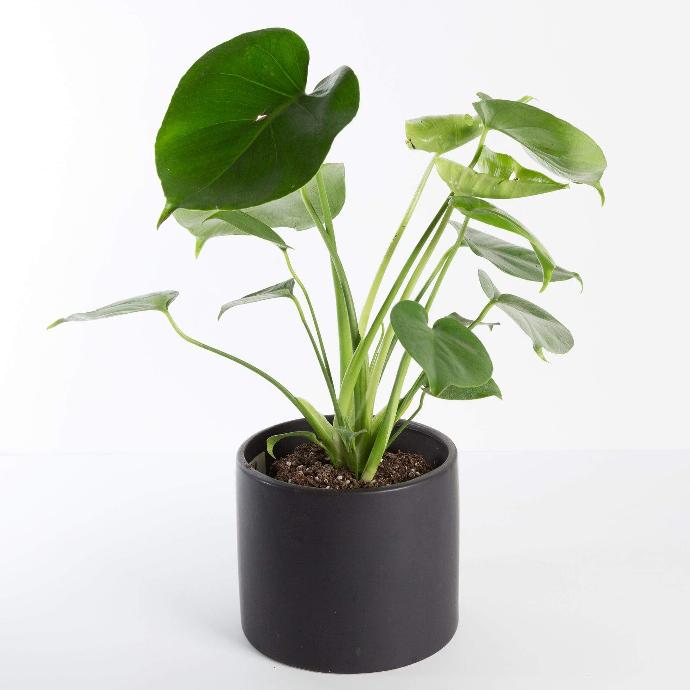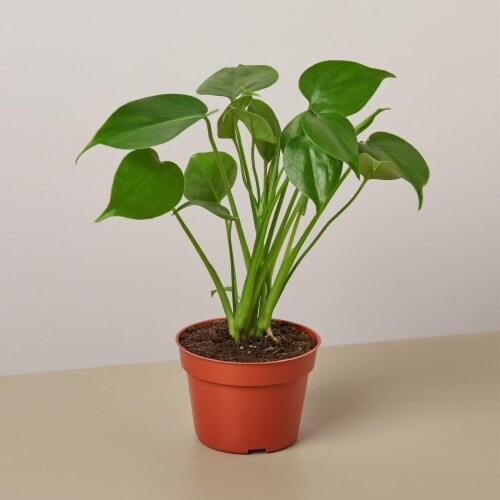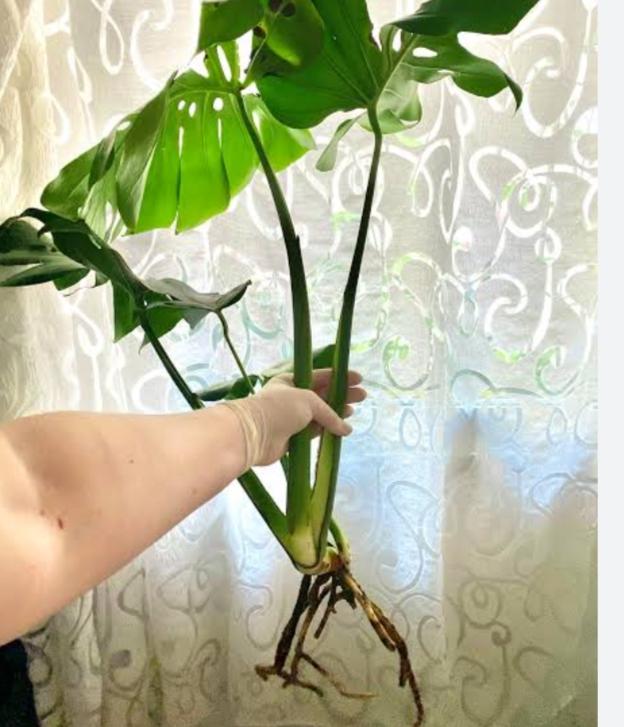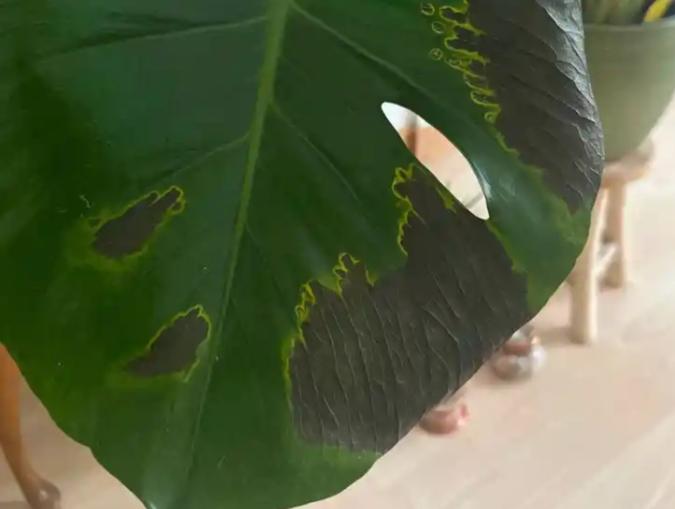Monstera split leaf Plant
Monstera Split Leaf, possibly referring to a specific Monstera variety, may have varying care requirements. Generally, plant in well-draining soil and provide bright, indirect light. Allow the soil to partially dry between waterings. Pruning helps maintain a tidy appearance.
Habit
Climber
Height
2-3 meters
Growth
Fast
Soil
Well-drained, sandy loam
Shade
Partial shade to Full Sun
Moisture
Moist
Edible
No
Medicinal
No
Origin
Central America
Climatic Condition
Tropical, humid
Temperature (°)
20-30
Humidity (%)
70-80
Potting media
Loamy or peat-based soil
Fertilizers
Potassium-rich
Watering
High
Plant Weight
1-2 kg
Flowering Time
Spring to Fall
Soil Ph level
6.0-7.5
Water Ph level
6.0-6.5
Soil EC
0.3-0.4 mS/cm
Yield Per Plant
High
NPK ratio
20:20:20
life Span
5-10 years
Health Benefits
Used in ornamental gardening, supports mental clarity, air purifier
Suggested Grow Media or Potting Mix ?
50% peat moss, 30% perlite, 20% pine bark
Suggested Fertigation/Fertilizers
Fertilize every 4 weeks with a balanced, water-soluble fertilizer.
Common Diseases and Remedies
Root rot , Leaf spot.
Small and Pale Leaves, Wilting leaves.
Remove Infected Plants, Spraying with baking soda solution.
HEALTH BENEFITS
- Similar air-purifying benefits as Monstera.
- Provides a calming presence, reducing stress.
- Helps maintain moisture levels in the air.
What Is An Monstera Split Leaf Plant?
Monstera split leaf, also known as Monstera deliciosa, is a popular tropical houseplant known for its large, glossy green leaves with distinctive cracks and holes. It is relatively easy to care for, preferring bright indirect light and well-drained soil. Regular watering and occasional spraying will help keep it healthy. It is also known for its ability to form aerial roots, which can be encouraged by providing moss poles or other supports.

What Are The Different Types Of Monstera Split Leaf
Plants?
1. Monstera deliciosa
A classic split-leaf variety with large, glossy green leaves and iconic fissures and holes
2. Monstera adansonii
Also known as Swiss cheese plant, this variety has smaller leaves and more pronounced holes and cracks than M. deliciosa.
3. Monstera Obliqua
IAlso known as the "Swiss Cheese Vine," this variety has very delicate, holey leaves and is known for its rarity and attractive appearance.
4. Monstera borsigiana
Looks similar to M. Deliciosa, this variety is often confused because it usually has small leaves. However, they tend to be more compact and grow faster.
What Is An Areca Palm Tree?
Areca palm indoors belongs to the vast genus of palm plants that have about fifty-one differing species. Areca palm scientific name is Dypsis Lutescens, and it is also commonly referred to as the Eureka palm in the layman language. All its species prefer the heat of the tropical and subtropical regions like India, the islands of the Philippines, Malaysia, etc. The areca palm outdoors looks like a picture of peace with its flowy foliage that can take on a mighty escalation when planted in large floor planters. It is one of those palm house plants that grow with multiple stems, each one sprouting with numerous leaflets colored bright green. Moreover, several species offer areca nuts, which are widely used for chewing with betel leaves.

How To Care For Monstera Split Leaf Plants?
1. Location
Urban gardeners who compromise with planting magnificent and stunning plant buddies in their homes due to lack of space get happy with the mention of this areca palm variety. It requires propagation in small and colorful plastic pots with well-draining soil, and it will remain lowkey throughout its growth journey. These thrive better in a partially shaded spot safe from wind.
2. Sunlight
Often called the triangle palm, it gets its name from its triangular appearance. One can trace this palm’s lineage back to Madagascar, where it was found flourishing with enchanting beauty. Unlike the standard variety, this palm grows old with a single trunk from which branches triangular foliage shaded green to blue.
3. Soil
If you are looking for an evergreen areca palm, your search must end here. This variety is known for its bushy foliage that results from multiple stems gathering several leaflets. The areca palm leaf is not only large, but it is also super gorgeous. This variety also finds significance in medical books due to its health benefits.
4. Hydration
One of the lesser-known species of indoor palm plants, this species is mainly known for its decorative value in warm and tropical regions. The plant originated in the surreal lands of the Comoro Islands, only to be spread around the tropical and subtropical areas worldwide. This variety can always be noticed when planted in the home gardens!

5. Nourishment
To nourish your Monstera split-leaf plant, you can use a balanced, water-soluble tropical houseplant fertilizer. During the spring and summer growing season, you can fertilize your monstera approximately every 2 to 4 weeks. Dilute fertilizers to one-half or one-quarter of the recommended concentration to avoid over-fertilizing, which can cause salt buildup in the soil.
6. Issues
Yellowing or browning leaves can indicate a variety of problems, including overwatering, underwatering, or nutritional deficiencies. Adjust watering and fertilization accordingly to ensure your plants receive sufficient light. Common pests that can affect Monstera plants include spider mites, aphids, and mealybugs. Inspect your plants regularly for signs of pests and treat immediately with insecticidal soap or neem oil if necessary.

FAQ'S About Growing Monstera Split Leaf
1. How often should I water my Monstera split leaf plant?
The frequency of watering your Monstera split leaf plant depends on various factors such as environmental conditions, pot size, soil type, and the plant's stage of growth.When watering, water the plant thoroughly until water drains out of the bottom of the pot. This ensures that the entire root ball is moistened
2. What type of soil is best for Monstera split leaf plants?
The best type of soil for Monstera split leaf plants is a well-draining potting mix that retains some moisture but doesn't become waterlogged.
3. How much light does a Monstera split leaf plant need?
Monstera split leaf plants prefer bright, indirect light. They thrive in conditions where they receive plenty of ambient light but are shielded from direct sunlight, which can scorch their leaves.direct sunlight is unavoidable, provide filtered light by placing sheer curtains or blinds between the plant and the window to diffuse the sunlight
4. What are some signs that my Monstera split leaf plant may need repotting?
If you notice roots growing out of the drainage holes at the bottom of the pot, it's a clear sign that the plant has outgrown its current container and needs more space.If your Monstera has stopped producing new leaves or has slowed its growth significantly, it may be a sign that it's root-bound and in need of more room to grow
5. Can I grow Monstera split leaf plants outdoor?
Yes, Monstera split leaf plants can be grown outdoors in suitable climates. They are native to tropical regions and thrive in warm, humid environments. If you live in a region with a similar climate, you can grow Monstera split leaf plants outdoors with proper care

